How to Protect Plants from Freeze
- January 16, 2024
- 0 comment
As winter comes around, gardeners have the big task of protecting their plants from the dropping temperatures. Frost can be tough on your garden, slowing down growth and sometimes harming your plants. But, with the right planning and a bit of extra care, you can make your garden strong enough to do well even during the coldest times of the year.
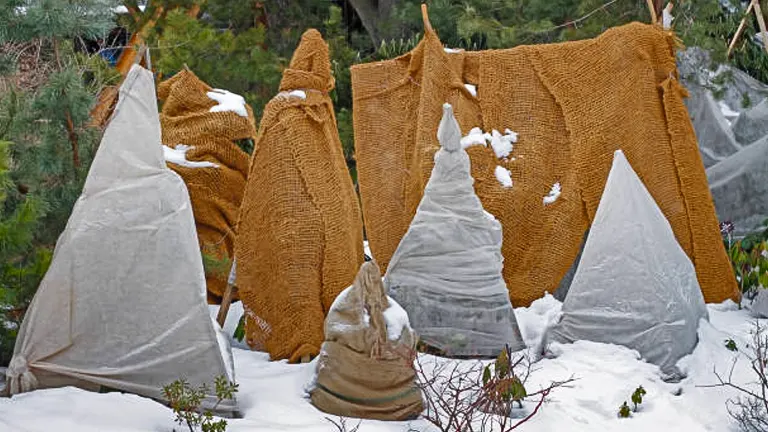
In this guide, we’ll delve into practical and effective methods to shield your plants from the winter’s chill. From staying attuned to the ever-changing weather forecasts to embracing protective tools like frost blankets and nourishing organic mulch, join us on a journey to fortify your garden against the elements.
List of Guides on How to Protect Plants from Freeze
- Relocate Potted Plants to Indoor Settings
- Add a Layer of Mulch on Garden Beds
- Cover Plants With Fleece
- Place Tender Plants in a Sheltered Spot
- Store Tender Perennials Safely Over Winter
- Use a Cloche to Protect Delicate Plants
- Use a Cold Frame for Young Plants
- Water Plants in the Morning
- Wrap Outdoor Containers
- Choose Plants That Fit Your Climate
Identifying Vulnerable Plants
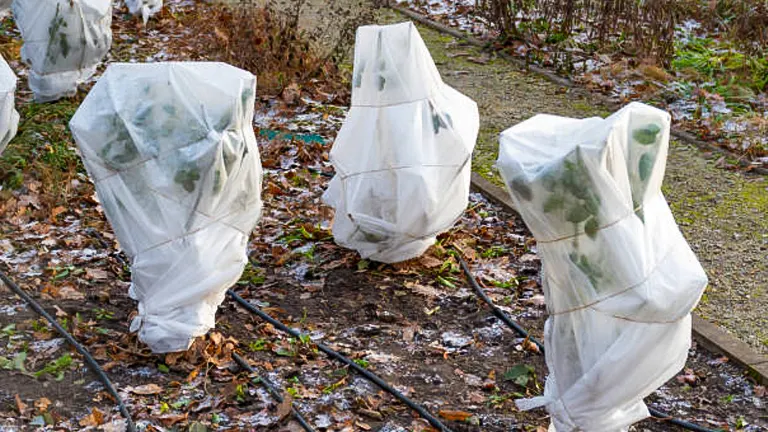
As the cooler weather sets in, it’s important to be proactive in identifying which plants in your garden are most at risk from frost. Young and tender plants are often the most vulnerable to damage from sudden drops in temperature. Being able to spot early signs of frost damage, like blackened leaves or wilting stems, is key to taking timely action. Typically, there are several types of plants that tend to need extra care and protection as the cold approaches:
- Young Seedlings and New Growth: Newly sprouted plants and tender shoots are highly vulnerable to frost and may benefit from protective measures.
- Tender Perennials: Perennials that are not fully hardy and may face winter challenges should be considered for protection.
- Half-Hardy Varieties: Plants categorized as half-hardy may need additional care and insulation against freezing temperatures.
- Tropical and Subtropical Plants: Exotic species like palms and banana plants, which are not acclimated to cold climates, should be shielded from frost.
As winter approaches, taking a proactive stance toward safeguarding these susceptible categories ensures that your garden remains resilient in the face of challenging weather conditions. By customizing protection strategies based on plant characteristics, you create a robust defense system that nurtures their health and longevity.
Protect Plants from Freezing
1. Relocate Potted Plants to Indoor Settings
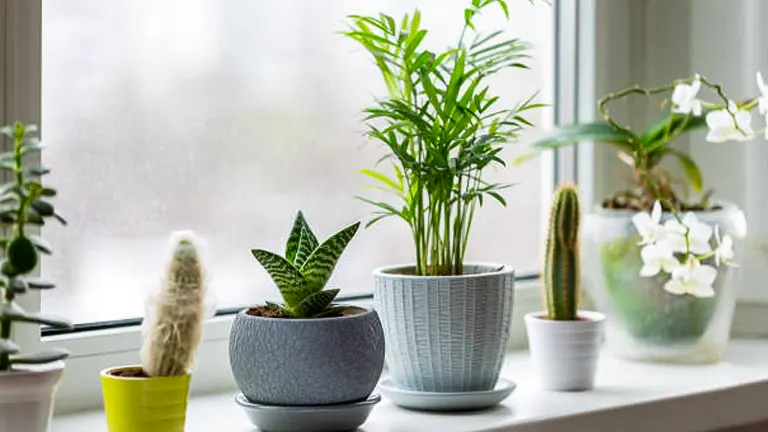
Potted plants, with their limited insulation, are particularly susceptible to frost. Bring them indoors to a conservatory, garden room, or even a frost-free greenhouse. This not only shields them from severe weather but also allows for more controlled care.
Additional Tips:
- Ensure these indoor havens offer ample light.
- Regularly rotate plants for balanced growth.
- Inspect for pests prior to indoor relocation.
2. Add a Layer of Mulch on Garden Beds
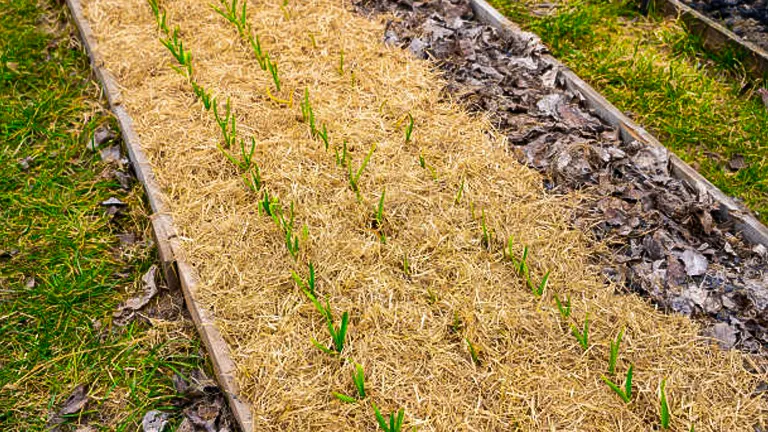
For plants like agapanthus, phygelius, hedychium, and melianthus, which can struggle in colder weather, using mulch is a great and easy way to protect them. You can use things like chopped-up bark, straw, or dead leaves and spread them around the base of these plants. This layer acts like a warm blanket. It helps keep the soil warm and protects the main part of the plant from cold and rough weather. Mulch is really helpful because it creates a steady and safe environment for the plants, especially when the temperature changes suddenly. This simple step of adding mulch can make a big difference in keeping these plants healthy during the colder months.
Additional Tips:
- To make sure your mulch is doing its job well during winter, it’s important to keep an eye on it and add more when needed. This helps it stay effective in protecting your plants.
- Be careful not to put the mulch right up against the plants’ stems. If it’s too close, it can cause the stems to rot or attract pests.
- Also, think about how cold it gets in your area and use that to decide how thick the mulch should be. In really cold places, a thicker layer of mulch can give better protection against the cold.
3. Cover Plants With Fleece

To protect your larger garden plants and shrubs from cold snaps, you can use materials like horticultural fleece, old blankets, or even bubble wrap. A good way to do this is to make a tent-like cover around the plants. You can put stakes in the ground and drape your chosen material over them. This way, you protect the plants from direct contact with frost. Fleece is a great option because it’s light but still insulating. If you prefer using natural materials, you can make a cover with wire netting stuffed with dry leaves or bracken.
Additional Tips:
- Make sure the covers are tied down well, so they don’t get blown away if it gets windy.
- Take the covers off during the day so the plants can get sunlight and don’t get too hot.
- Regularly check under the covers for any moisture buildup or bugs and deal with these issues quickly to keep your plants healthy.
4. Place Tender Plants in a Sheltered Spot
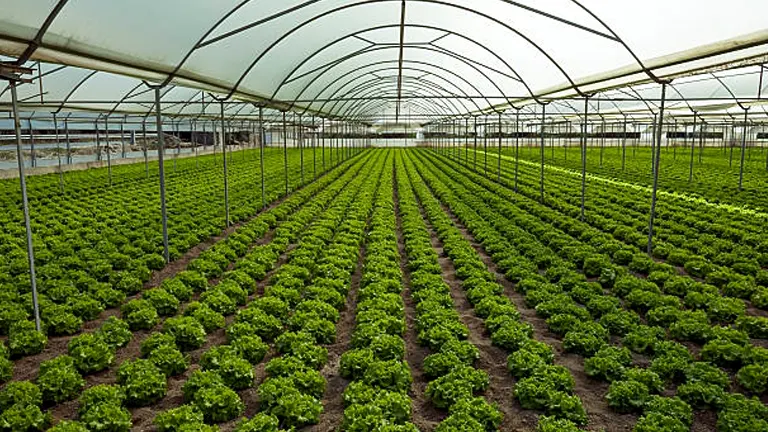
Choosing the right spot for plants that can’t handle the cold can make a big difference. Place them in areas that are sheltered, like near walls facing south or west. These walls can soak up heat during the day and release it at night, creating a warmer microclimate around the plants. Good sheltered spots include areas beside fences, under big evergreen trees, or in sunlit parts of patios and courtyards.
Additional Tips:
- Keep an eye on these sheltered areas, especially when it gets really cold, to make sure they stay warm enough for your plants.
- Be careful with plants that flower early, like magnolias and camellias. Don’t put them where the morning sun will hit them directly, as this can cause a rapid thaw and damage the flowers.
- If the weather changes suddenly, think about using portable garden structures or screens to give your plants extra protection.
5. Store Tender Perennials Safely Over Winter
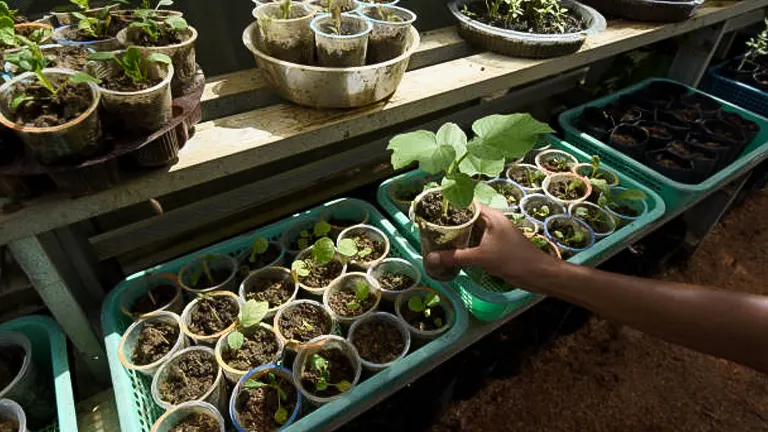
For tender perennials that have finished growing for the season, you can lift them out of the ground and store them somewhere cool and safe from frost, like a potting shed or greenhouse. This is a great way to protect plants like dahlias or begonias through the winter, especially their roots, bulbs, and tubers, which are sensitive to frost. You can also use mini greenhouses or make your own cold frames as storage places.
Additional Tips:
- Before you store the plants, check them for any signs of disease or pests and treat these problems if you find any.
- It’s a good idea to label the containers you store your plants in. This makes it easier to know what’s what when it’s time to put them back in the garden.
- Every now and then, check on your stored plants. Make sure they have the right amount of moisture and enough air flow to prevent any mold or mildew from growing.
6. Use a Cloche to Protect Delicate Plants
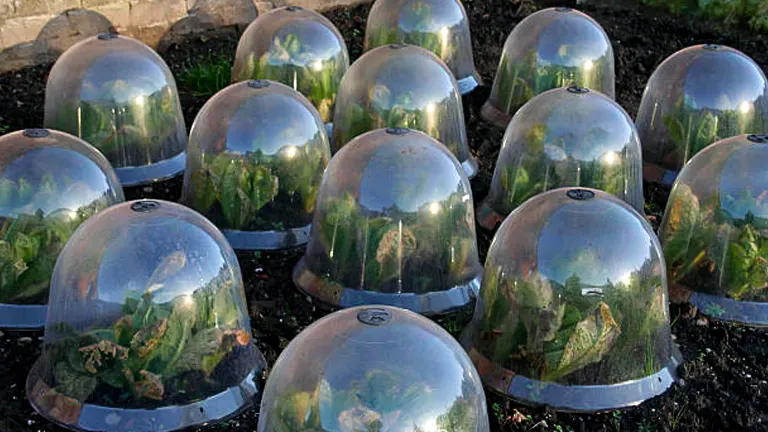
A cloche is a really effective tool for keeping tender plants safe from frost. These dome-shaped covers, which can be made of glass or plastic, act like little protective bubbles against cold and harsh weather. For a more environmentally friendly option, you can turn large plastic bottles or milk jugs into DIY cloches. Just place them over smaller plants and seedlings to shield them from frost and create a warm, cozy space. Be sure to take the cloches off during the day so the plants can enjoy the sun.
Additional Tips:
- Keep an eye on the temperature under the cloche, especially on sunny days, to avoid overheating.
- Make sure the cloche is big enough for the plants to grow without getting cramped or damaged.
- Check for any condensation inside the cloche from time to time and open it up a bit to let air in and stop too much moisture from building up.
7. Use a Cold Frame for Young Plants

A cold frame is perfect for giving young hardy annuals, especially those sown in fall, a warm place during winter. You can use a portable cold frame or build one yourself with good ventilation. These frames provide a sheltered area where you can control the temperature and humidity, keeping your plants healthy in the cold. Raising the frame off the ground helps with drainage and makes it easier to let air in when the weather’s milder.
Additional Tips:
- Keep an eye on the temperature inside the cold frame and adjust the ventilation to avoid it getting too hot.
- Use the cold frame to get seedlings used to outside conditions before moving them to your garden in spring.
- Adding mulch inside the cold frame can help keep the soil warm and protect your plants from big temperature changes.
8. Water Plants in the Morning

Changing when you water your plants in winter can really help. Watering in the morning lets the soil soak up heat during the day, which helps protect the plants from frost at night.
Additional Tips:
- Be careful not to overwater, as wet soil can cause root problems in cold weather.
- Plants in pots need more attention as they freeze faster. Watering them helps keep them warm.
- Use a watering can with a fine nozzle or a soaker hose to water gently and evenly.
9. Wrap Outdoor Containers
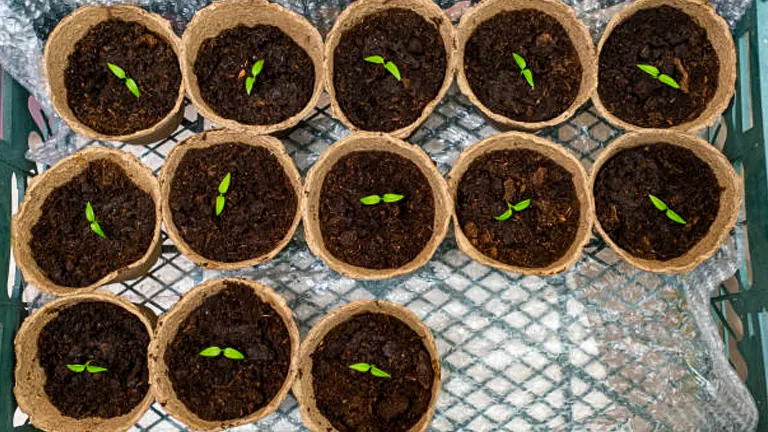
If you can’t bring your potted plants inside, make sure they’re safe outside. Put pots in protected spots and group them together for warmth. You can wrap the pots in bubble wrap or straw for extra protection. Another idea is to partly bury them in the ground, using the earth’s warmth to protect the roots from freezing.
Additional Tips:
- Raise the pots on bricks or pot feet for better drainage.
- Regularly check if the soil in the pots is moist enough.
- Don’t let plastic touch the plants directly, as it can damage them.
10. Choose Plants That Fit Your Climate
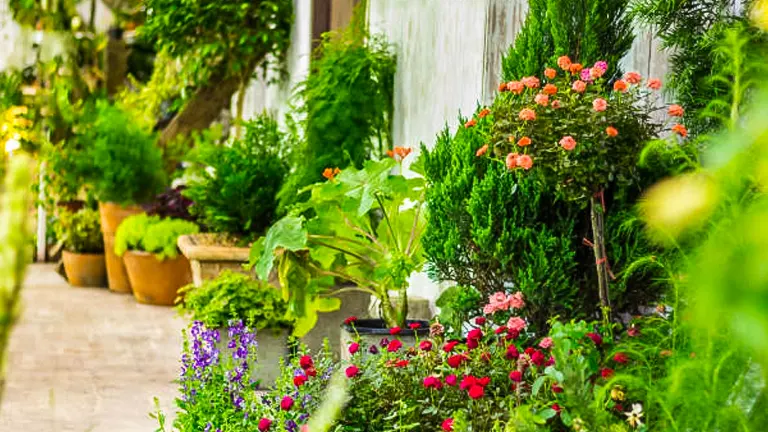
A key to avoiding frost damage is to pick plants that are right for your area. Choose plants that match your USDA hardiness zone. Knowing how hardy different plants are can save you a lot of trouble and make your garden more resilient.
Additional Tips:
- Check out local nurseries to find plants that are really good at handling the weather and soil conditions in your area.
- Mix it up in your garden with both very tough plants and ones that are somewhat tough. This variety can make your garden stronger as a whole.
- Keep an eye on the different spots in your yard. Some areas might be a bit warmer than others, which means you can grow a wider range of plants there.
By following these steps tailored to your plants’ needs, you can create a strong defense against cold weather. These methods will help keep your garden healthy and vibrant all through winter.
Understanding the Importance of Protecting Plants from Freeze
- Keeping Plants Healthy: Protecting plants from freezing temperatures is crucial for their health. Freezing can damage their cells and mess up important processes they need to live. Covering plants with frost cloths or moving them inside helps keep their cells healthy and supports their overall well-being.
- Ensuring Growth and Development: Keeping plants safe from the cold is especially important for young seedlings and delicate new growth. Cold snaps can stop their growth and damage leaves and stems. Protecting them from frost lets them grow naturally, leading to stronger and healthier plants.
- Better Crop Yields: For those growing food in their gardens, preventing frost damage is key to getting a good harvest. Frost can lower the amount and quality of what you grow. Using mulch and protective covers can lead to a more plentiful and better-quality crop.
- Preserving Beauty of Flowers: Ornamental plants add beauty to gardens, but frost can ruin their looks, causing leaves to turn black or wilt. Using protective methods like fleece covers keeps flowers and foliage looking vibrant and beautiful.
- Avoiding Long-Term Damage: Frost doesn’t just cause immediate harm; it can also lead to long-term issues, like damaging the roots, which might not be obvious right away but can hurt the plant’s health over time. Protective steps help prevent this kind of long-term damage.
- Helping Plants Through Winter: Some plants need special care in winter to make it through to the next growing season. Protecting them from cold helps them adapt to the colder weather and ensures they come back strong and healthy in the spring.
- Protecting Your Garden Investment: Gardens often take a lot of time, effort, and money to create. Keeping plants safe from frost helps protect this investment by avoiding the need to replace plants or do major garden repairs. This helps keep your garden in good shape for a long time.
- Economic Benefits for Farmers: In farming, where crops are a source of income, protecting them from frost is essential. Frost can lead to financial losses due to lower crop yields. Farmers can use protective methods to reduce the impact of bad weather on their income.
Understanding all these benefits shows how important it is to take steps to protect plants from freezing. This is true whether you’re gardening for beauty, growing your own food, or farming for a living.
Conclusion
In conclusion, protecting plants from the cold is a key part of keeping them healthy and strong. Whether it’s moving potted plants inside or using covers for sensitive seedlings, these steps are really important. They help keep your garden looking beautiful, make sure crops keep growing well, and prevent financial losses. By understanding and meeting the specific needs of different plants, you’re doing more than just helping them survive; you’re setting them up for healthy growth. Taking care of plants in the cold shows how we can be good caretakers of nature, helping our plants and gardens thrive through the changing seasons.
FAQs
- What signs indicate that my plants have experienced frost damage?
Signs of frost damage include blackened or limp growth, distortion of leaves, and the leaves turning green on evergreen plants and shrubs. These visual cues indicate the need for prompt protective measures. - Is it necessary to protect all types of plants from freeze, or are some more resilient than others?
While certain plants may exhibit natural resilience to colder temperatures, vulnerable varieties such as young seedlings, tender perennials, half-hardy plants, and tropical species are particularly susceptible. It is advisable to tailor protective measures based on the specific needs of each plant type. - How can I protect plants if I don’t have access to frost cloths or covers?
In the absence of specialized covers, improvised solutions like using old blankets, bedsheets, or even newspaper can provide a protective barrier against frost. Ensure that these materials are lightweight, breathable, and insulating. - What is the ideal time to apply protective measures for upcoming freezing temperatures?
It’s best to be proactive and implement protective measures before the anticipated freeze. Monitoring local weather forecasts and acting ahead of time, especially if temperatures are forecasted to drop below freezing, is key to effective plant protection. - Can watering my plants before a freeze help protect them?
Yes, watering plants before a freeze can be beneficial. Moist soil absorbs heat during the day and has an insulating effect, providing additional protection against freezing temperatures during the night. - Are there certain plants that benefit from, or are tolerant to, frost?
Yes, some vegetable crops are frost-tolerant and can even enhance their flavor after exposure to frost. Examples include fava beans, spinach, scallions, and asparagus. Researching the frost tolerance of specific plants is essential. - Can I use plastic bags to cover plants from frost?
It is not advisable to use plastic bags for covering plants. Plastic can damage plants by holding water against them, causing more damage from freezing. Additionally, plastic is not as insulating and eco-friendly as other materials, so alternative covers should be considered. - How do I protect potted plants from freeze when bringing them indoors is not an option?
If bringing potted plants indoors is not feasible, consider placing them in sheltered areas and grouping them together. Wrapping the containers with insulating materials like bubble wrap or straw, or burying the pots in the ground with the rim exposed, helps protect the roots from freezing temperatures.
In wrapping up, safeguarding your plants from frost is like giving them a cozy winter blanket. Simple measures, from mulching to covering, ensure they weather the chill and thrive when the sun returns. Happy gardening!

Benjamin Brooks
Forestry AuthorGreetings! I'm Benjamin Brooks, and my journey over the past 15 years has revolved around the fascinating realms of content creation, expertise in snow clearing, and the intricate world of lumberjacking and landscaping. What began as a simple curiosity about the natural world and heavy machinery has evolved into a passionate profession where my love for crafting words intertwines seamlessly with my lumberjacking and garden skills.


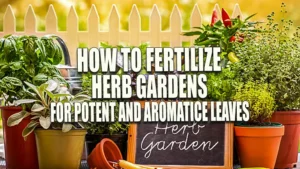
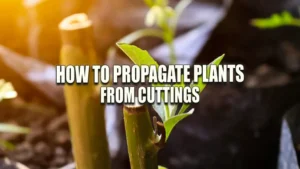









Leave your comment